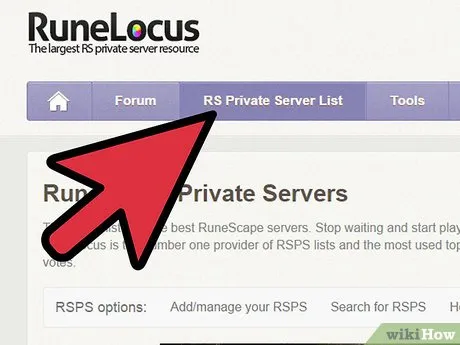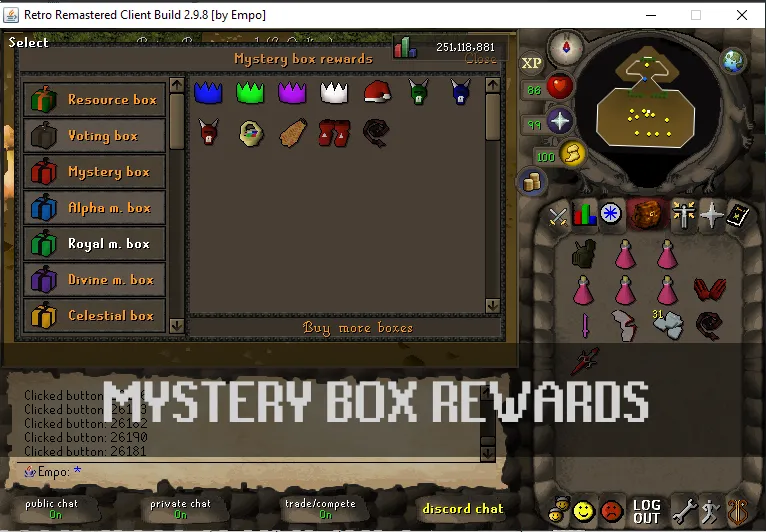Your cart is empty
How to Make an Old School RuneScape Private Server Step-by-Step

Creating your own Old School RuneScape (OSRS) private server, or RSPS, lets you customize the iconic MMORPG experience, from tweaking gameplay to building unique worlds for you and your friends. Whether you’re nostalgic for 2007-era Gielinor or want to experiment with custom content, setting up an OSRS private server is achievable with some technical know-how. This guide walks you through the process, covering everything from software installation to server customization, optimized for beginners and enthusiasts alike.
Before diving into the technical steps, let’s explore why an OSRS private server is worth your time. Private servers offer flexibility that official servers don’t, letting you control the game’s rules, economy, and features.
Benefits of Running Your Own RSPS
- Customization: Add new items, quests, or areas to suit your vision.
- Community: Build a player base around your unique server.
- Learning Opportunity: Gain skills in Java programming, server management, and networking.
- Personal Play: Enjoy OSRS solo or with friends without grind-heavy mechanics.
Legal Considerations
Running an RSPS exists in a legal gray area. While playing is generally low-risk, hosting one could potentially violate Jagex’s terms or copyright laws. Always operate cautiously, avoid profiting directly from the server, and consider consulting legal advice if you plan to scale up. Proceed at your own risk.
Prerequisites for Setting Up an OSRS Private Server

Starting an RSPS requires specific tools and a bit of preparation. Here’s what you’ll need to get going.
Hardware Requirements
You don’t need a supercomputer, but a decent setup helps:
- CPU: Dual-core processor (2.0 GHz or better).
- RAM: At least 4GB (8GB recommended for multiple players).
- Storage: 10GB free space for server files and Java.
- Internet: Stable connection, preferably 10 Mbps upload for hosting.
Software Requirements
| Software | Purpose | Download Source |
|---|---|---|
| Java Development Kit (JDK) | Compiles and runs Java-based server code | Oracle or OpenJDK |
| RSPS Source Files | Core server and client files | Rune-Server, RuneLocus |
| Text Editor | Editing server code | Notepad++, VS Code |
Basic Skills Needed
No expert coding skills are required to start, but familiarity with these helps:
- Java Basics: For tweaking server mechanics.
- Command Line: To run server scripts.
- Networking: For port forwarding and hosting.
Step-by-Step Guide to Setting Up Your RSPS

Now, let’s get to the core of creating your OSRS private server. Follow these steps carefully to avoid common pitfalls.
Step 1: Install Java and JDK
RuneScape runs on Java, so installing the latest Java Development Kit is crucial.
- Visit the Oracle JDK page or OpenJDK.
- Download the latest version compatible with your OS (Windows, Mac, or Linux).
- Run the installer and follow prompts.
- Verify installation by opening a terminal and typing
java -version. You should see the installed version.
Tip: Ensure your JAVA_HOME environment variable points to the JDK folder for smooth compilation.
Step 2: Download RSPS Server and Client Files
You’ll need a server (handles game logic) and a client (lets players connect). Popular sources include:
- Rune-Server
- RuneLocus
- MoparScape forums
Choose a base like “Elvarg” or “PI” for OSRS-style servers. Download and unzip the files into separate “Server” and “Client” folders.
Step 3: Configure and Run the Server
- Open the “Server” folder and locate
run.bat(Windows) orrun.sh(Mac/Linux). - Double-click to run. A console should appear, indicating the server is starting.
- If errors occur, check JDK installation or file paths.
- Select a port (common choices: 43594, 43595, or 5555).
- Save and compile using the provided compile script (e.g.,
compile.bat).
Note: Compilation errors often stem from missing Java dependencies. Reinstall JDK if issues persist.
Step 4: Set Up the Client
The client connects players to your server.
- Open the “Client” folder and find
run.batorrun.sh. - Edit the client configuration file (often
client.javaorsettings.java). - Set the server IP to
localhost(127.0.0.1) for local testing. - Match the port to the one chosen in Step 3.
- Save, compile, and run the client.
Test by logging in. If successful, you’ll see the OSRS login screen.
Step 5: Port Forwarding for Online Access
To let others join, you’ll need to make your server accessible online.
- Log into your router’s admin page (usually 192.168.1.1).
- Find the “Port Forwarding” section.
- Add a rule for your chosen port (e.g., 43594) and your computer’s local IP.
- Save changes and restart your router if needed.
- Share your public IP (find it via WhatIsMyIP) with players.
Warning: Opening ports can expose your network. Use a firewall and consider a VPS for safer hosting.
Customizing Your OSRS Private Server
Once your server is running, it’s time to make it your own. Customization is where your RSPS shines.
Editing Game Mechanics
Modify drop rates, XP rates, or spawn points by editing server files (usually in src/server).
- XP Rates: Adjust in
config.java(e.g.,xpMultiplier = 10). - Item Spawns: Add items to starting inventories in
player.java. - NPCs: Edit NPC behaviors in
npcHandler.java.
Adding Custom Content
Create new quests, bosses, or areas using Java. Start small:
- Learn basic Java syntax (tutorials on W3Schools).
- Use existing server code as a template.
- Test changes locally before deploying.
For advanced content, tools like Blender can help design custom models, but this requires deeper skills.
Community Building
A great server needs players. Promote yours through:
- Toplists: List on RuneLocus or MoparScape.
- Forums: Engage on Rune-Server or Reddit’s r/RSPS.
- Social Media: Share updates on Discord or Twitter.
Tip: Unique features (e.g., custom bosses) attract more players than generic servers.
Troubleshooting Common RSPS Issues
Setting up an RSPS isn’t always smooth. Here are fixes for frequent problems.
Server Won’t Start
- Check JDK installation.
- Ensure server files aren’t corrupted—redownload if needed.
- Verify port availability (use
netstat -anin terminal).
Client Connection Errors
- Confirm server and client ports match.
- Test with
localhostbefore using public IP. - Disable firewall temporarily to diagnose issues.
Performance Lag
If your server lags with multiple players:
- Upgrade RAM or CPU.
- Optimize server code (reduce loops in scripts).
- Consider a VPS for better performance.
For persistent issues, check forums like Rune-Server for community advice.
Building an OSRS private server is a rewarding project that blends creativity and technical skill. From setting up Java to crafting custom content, each step brings you closer to your own slice of Gielinor. Start small, experiment, and engage with the RSPS community to grow your server. Ready to dive in? Grab those server files and start shaping your RuneScape adventure today!
